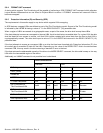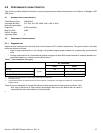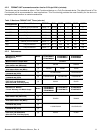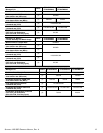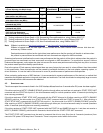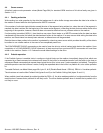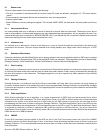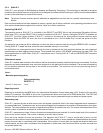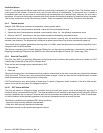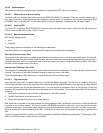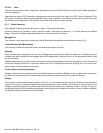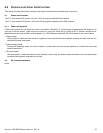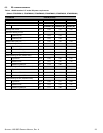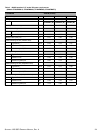SEAGATE 1200 SSD PRODUCT MANUAL, REV. A 17
5.2.5 Data Retention
Data Retention is another major characteristic of SSD's that must be accounted for by all the algorithms that the SSD
implements. While powered up, the Data Retention of SSD cells are monitored and rewritten if the cell levels decay to an
unexpected level. Data Retention when the drive is powered off is affected by Program and Erase (PE) cycles and the
temperature of the drive when stored.
5.2.6 Lifetime Endurance Management (Available on select models)
As stated in Section 5.2, an SSD has a limited number of Program and Erase (PE) cycles that are capable. In worse case
applications, the write workload could be such that the drive experiences a high Write Amplification Factor that could lead to
potential wear out prior to the drive achieving it's expected field life. Additionally, the Data Retention spec of the SSD needs
to be considered to ensure the spec is met once the drive is worn out. Seagate has implemented a Lifetime Endurance
Management technique which helps OEMS and user to avoid early wear out. By monitoring the write workload being sent to
the drive, the drive can add additional response time to WRITE commands to provide a sustainable level of performance that
is capable of being sustained for the life of the drive. Most users may never see this added response time in their
applications.
5.2.7 SSD Percentage Used Endurance Indicator
An application can interrogate the drive through the host to determine an estimate of the percentage of device life that has
been used. To accomplish this, issue a LOG SENSE command to log page 0x11. This allows applications to read the
contents of the Percentage Used Endurance Indicator parameter code. The Percentage Used Endurance Indicator is defined
in the T10 document SBC-3 available from the T10 committee.
5.3 RELIABILITY AND SERVICE
Integrators can enhance the reliability of Seagate 1200 SSD drives by ensuring that the drive receives adequate cooling.
Section 6.0 provides temperature measurements and other information that may be used to enhance the service life of the
drive. Section 10.2 provides recommended air-flow information.
5.3.1 Annualized Failure Rate (AFR) and Mean Time Between Failure (MTBF)
The production drive shall achieve an AFR of 0.44% (MTBF of 2,000,000 hours) when operated in an environment that
ensures the case temperatures do not exceed the values specified in Section 6.5. Operation at case temperatures outside
the specifications in Section 6.5 may increase the product AFR (decrease the MTBF). The AFR (MTBF) is a population
statistic not relevant to individual units.
The AFR (MTBF) specification is based on the following assumptions for Enterprise Storage System environments:
• 8760 power-on hours per year.
• 250 average on/off cycles per year.
• Operations at nominal voltages.
• Systems will provide adequate cooling to ensure the case temperatures specified in Section 6.5 are not exceeded. Tem-
peratures outside the specifications in Section 6.5 will increase the product AFR and decrease the MTBF.
5.3.2 Preventive maintenance
No routine scheduled preventive maintenance is required.
5.3.3 Hot plugging the drive
When a drive is powered on by switching the power or hot plugged, the drive runs a self test before attempting to
communicate on its’ interfaces. When the self test completes successfully, the drive initiates a Link Reset starting with OOB.
An attached device should respond to the link reset. If the link reset attempt fails, or any time the drive looses sync, the drive
initiated link reset. The drive will initiate link reset once per second but alternates between port A and B. Therefore each port
will attempt a link reset once per 2 seconds assuming both ports are out of sync.
If the self-test fails, the drive does not respond to link reset on the failing port.
Note. It is the responsibility of the systems integrator to assure that no temperature, energy, voltage hazard, or ESD
potential hazard is presented during the hot connect/disconnect operation. Discharge the static electricity from
the drive carrier prior to inserting it into the system.



